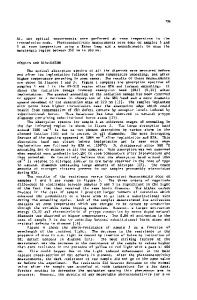Determination of the Distribution of Ion Implantation Boron in Silicon
- PDF / 353,479 Bytes
- 5 Pages / 612 x 792 pts (letter) Page_size
- 12 Downloads / 384 Views
Determination of the Distribution of Ion Implantation Boron in Silicon Te-Sheng Wang a, A.G. Cullis a, E.J.H. Collart b, A.J. Murrell b, M.A. Foad c Dept of Electronic & Electrical Engineering, University of Sheffield, Sheffield, S1 3JD, UK b Applied Materials, Thermal Processing and Implant Division, Foundry Lane, Horsham, West Sussex, RH13 5PY, UK c Applied Materials, Transistor Doping and Junction Division, 3050 Bowers Avenue, Santa Clara, CA 95054, USA a
ABSTRACT Boron is the most important p-type dopant in Si and it is essential that, especially for low energy implantation, both as-implanted B distributions and those produced by annealing should be characterized in very great detail to obtain the required process control for advanced device applications. While secondary ion mass spectrometry (SIMS) is ordinarily employed for this purpose, in the present studies implant concentration profiles have been determined by direct B imaging with approximately nanometer depth and lateral resolution using energy-filtered imaging in the transmission electron microscopy. The as-implanted B impurity profile is correlated with theoretical expectations: differences with respect to the results of SIMS measurements are discussed. Changes in the B distribution and clustering that occur after annealing of the implanted layers are also described. INTRODUCTION Si integrated circuit technology relies upon ion implantation as the key doping processes. As the scaling of CMOS (complementary metal oxide semiconductor) devices is shrunk down to 0.1µm [1], low energy ion implantation is required to reduce source/drain extensions in order to avoid short channel effects [2]. Since implantation of energetic ions into Si is accompanied by nuclear collisions, the lattice of the implanted layer will be damaged to a certain level depending on the implant energy and dose. Rapid thermal annealing (RTA) treatment has been widely used for repairing implantation damage and achieving dopant activation [3-4]. B+ ion implantation in Si is the most useful p-type doping process. Since B is a light element, significant ion channelling during implantation and unwanted transient enhanced diffusion (TED) [5-6] during thermal annealing can increase the doping depth depending on the annealing temperature and ramp-up rate employed. These effects also reduce the dopant concentration in the implanted region. The solid solubility of B in Si is reasonably low (~2E20 atoms/cm3 at 900°C) and, for increasingly high implant doses, there is an increasing tendency for impurity atoms to cluster with the Si lattice. However, the clustering behaviour of implanted B is not yet fully understood despite the fact that the clustering phenomenon has been investigated intensively within secondary ion mass spectrometry (SIMS) techniques and structure modelling in the past decade [7-12]. It has also been proved that a clustering region has a very high local B concentration (>2E20 atoms/cm3). In the present work, energy filtered transmission electron microscopy (EFTEM) has been employ
Data Loading...
